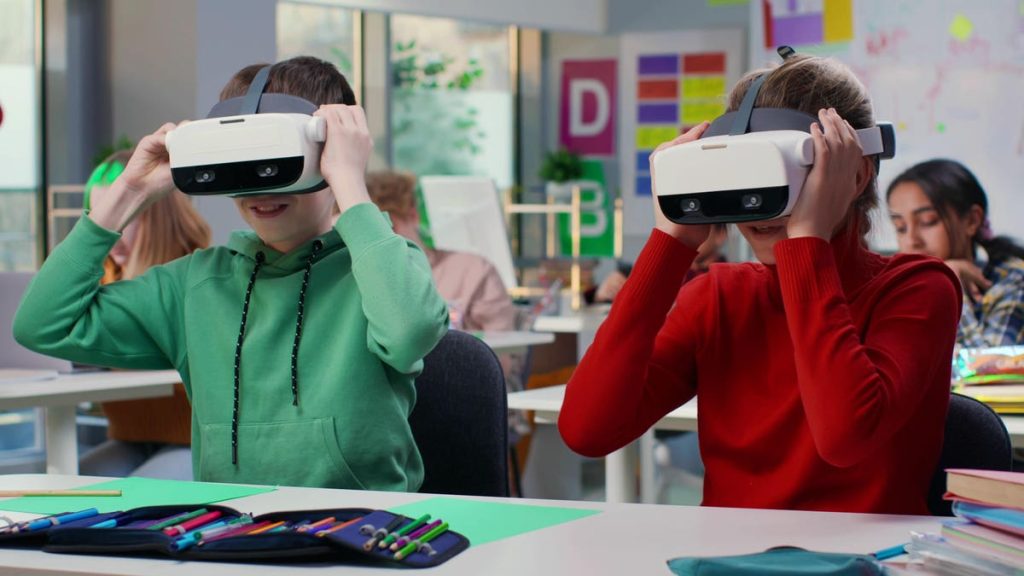The U.N. General Assembly (known as UNGA) kicked off on Monday with a hyper-focus on AI.
Foreign ministers including U.S. Secretary of State Antony Blinken met with Meta, Amazon, and other AI developers to talk about AI and the UN Sustainable Development Goals, including education, workforce, and well-being SDGs. Lunches, panels, and invite-only dinners are abuzz with AI themes. It is clear that AI will transform daily life and that schools need to prepare students for an AI-powered world, both ethically and practically. As Audrey Azoulay, UNESCO Director-General said in a press release where she shared guidance for teachers and schools, “Generative AI can be a tremendous opportunity for human development, but it can also cause harm and prejudice.”
Clearly, students and teachers are using ChatGPT. But for this article, I’m trying to get a handle on whether ChatGPT and AI more generally will truly transform the learning experience for students and their teachers?If we can peep into the future, is teaching and learning meaningfully different within 2-3 years because of AI?
Educators, this is not AI’s first rodeo.
We can learn from IBM’s experiments with Watson, what began as a chess-winning tool, evolved into a Jeopardy-winning machine, and has since become a critical player in medicine. When IBM first adapted Watson from Jeopardy to market viability, medicine was an obvious area for growth. Watson wasn’t limited to a few journal articles or medical case studies, after all; it had access to all medical knowledge. But it turned out that patients didn’t want to be diagnosed by a computer, even an all-knowing one, and doctors didn’t want to give up being diagnosticians.
How can we apply this to the classroom?
IBM designed and marketed Watson as a clinical decision support system to aid doctors with diagnosing disease and suggesting treatments, augmenting, not replacing, the essential human touch of doctors. It has since taken off, with partnerships with Memorial Sloan Kettering, Cleveland Clinic, and more. What do we in education have to learn from IBM’s experience more than a decade ago?
Today, teachers work about 50 hours a week, spending more than half that time not interacting with students. Tasks like preparing lessons and grading student work can take 15+ hours each week, a study by McKinsey & Company found.
AI has already proved itself a reliable help-meet to teachers.
In schools across the country, teachers are using AI to reduce grunt work, giving them more time to focus on the students in their classes. Charlotte Dungan’s organization, AI.edu, creates freely downloadable curriculum and resources, along with professional development, to help teachers maximize the benefits of AI to help them focus on their students. Her platform has tools to use AI to write parent emails — for translation to different languages or getting the tone just right or reports — allowing you to upload an example you’ve written before, instruct the AI to use your data from the current year, provide the data, and automatically generate a new report.
A teacher in California told National Education Association that she uses AI to “differentiate instruction, generate quizzes and even email parents, saving more time to interact with students.” As Dungan explained, “the overhead to differentiate learning is really high for a teacher, and AI can help teachers do that in reality, in their classrooms. Being able to re-level a text — if you’re a teacher with students of varying abilities, AI can help you level it up or down or create a vocabulary list with explanations.”
At a panel hosted by Infosys Foundation USA, Aon and Infosys to kick of UNGA week, Diana Alsindy, Founder, The Arabian Stargazer, and Propulsion Engineering Manager at Blue Origin, shared that when she came to the United States as a non-English-speaking immigrant, her ESL class didn’t work for her. “But as we personalize education through tech,” she predicted, “we’ll be able to create curated teaching methods for each individual student’s needs.”
AI can also serve as an ever-improving Cyrano de Bergerac, a teacher-whisperer providing real-time coaching and feedback.
Nick Lundberg, the Title I and special-programs coordinator of Spokane school district in Washington state, told EdWeek that “our coaches can’t provide the same level of feedback that an AI coach can give for all teachers.”
More than three-quarters of parents and more than nine in ten students said that they’re interested in AI tools that can help them learn, a new Common Sense Media poll found. Sal Khan, founder of Khan Academy, who has partnered with OpenAI to create Khanmigo, an AI tutor, said to the Financial Times that he envisioned a near-term world in which all students will “have an infinitely patient tutor with them, always.”
Khan may be right, but only if we heed the lessons from Watson. Most people didn’t want to be diagnosed by a computer, and most students won’t want to be taught by one, either (their parents will agree). Education reformers have long predicted that we will outsource teaching to computers, but their predictions of the end of teachers have, each time, been greatly exaggerated. As the pandemic reminded us, teaching is so much more than knowledge transfer. Even as AI can provide “an infinitely patient tutor” on the content, we still need real-life humans to create that spark of connection and sense of belonging that is so essential to persisting with learning. There is something ancient and fundamental about the human-to-human process of elders educating young people to become contributing members of a complex and dynamic society. It’s an age-old technology that we augment to our benefit and dismiss at our peril.
Read the full article here










